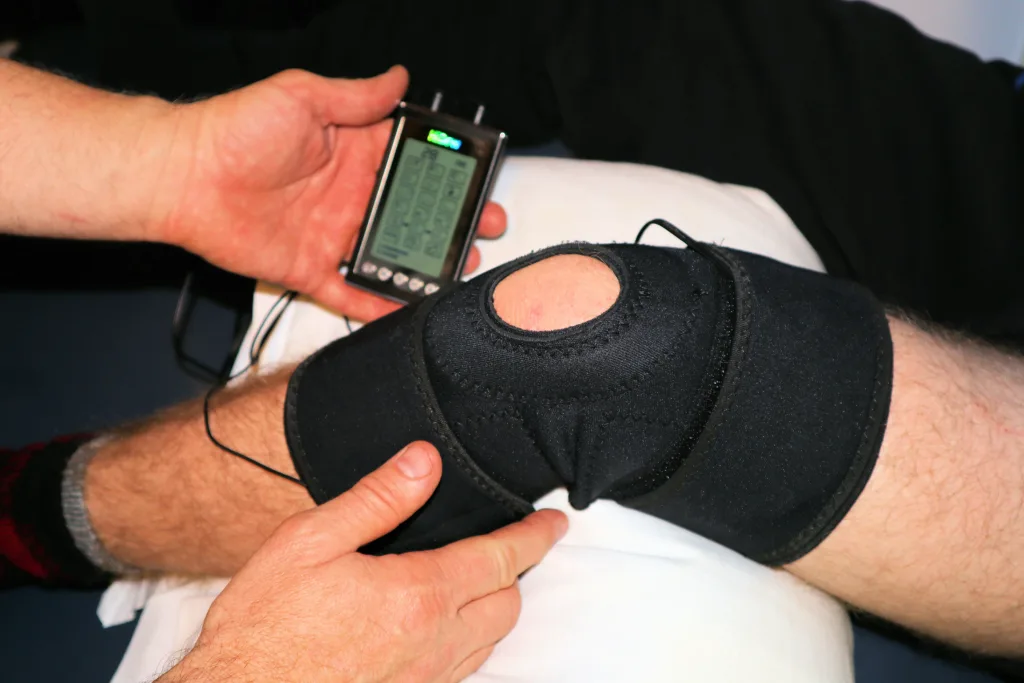The human body is a complex and fascinating machine that is made up of various parts and systems. One of the most important parts of the body is the knee joint, which connects the thigh bone (femur) to the shinbone (tibia). The knee joint plays a crucial role in mobility and movement, allowing us to walk, run, jump, and perform various physical activities.
In medical terminology, the word “proximal” refers to a part of the body that is closer to the center of the body than another part. For example, the knee is proximal to the ankle, which means that the knee is closer to the center of the body than the ankle.
The knee joint is a complex structure that is made up of bones, cartilage, ligaments, tendons, and muscles. The bones that make up the knee joint include the femur, tibia, and patella (kneecap). The femur is the longest and strongest bone in the human body, and it connects to the tibia at the knee joint. The patella is a small, triangular bone that sits in front of the knee joint and helps to protect the joint.
The knee joint is supported by various ligaments, which are strong, fibrous bands of tissue that connect bones to othr bones. The ligaments that support the knee joint include the anterior cruciate ligament (ACL), posterior cruciate ligament (PCL), medial collateral ligament (MCL), and lateral collateral ligament (LCL). These ligaments help to stabilize the knee joint and prevent it from moving in ways that could cause injury.
In addition to ligaments, the knee joint is also supported by tendons and muscles. Tendons are fibrous bands of tissue that connect muscles to bones, and they play an important role in movement and stability. The muscles that support the knee joint include the quadriceps, hamstrings, and calf muscles.
Despite the knee joint’s importance, it is also a common site of injury. Knee injuries can occur due to various reasons, such as overuse, trauma, or degeneration. Some common knee injuries include ligament tears, meniscus tears, and patellar dislocation.
The knee joint is an important part of the human body that plays a crucial role in mobility and movement. It is proximal to the ankle, which means that it is closer to the center of the body than the ankle. The knee joint is a complex structure that is made up of bones, cartilage, ligaments, tendons, and muscles, and it is supported by various structures that help to stabilize and protect it. Despite its importance, the knee joint is also a common site of injury, and it is important to take steps to prevent knee injuries and seek medical attention if an injury does occur.
Is Knee Proximal To The Ankle Or Distal?
The knee is proximal to the ankle. “Proximal” refers to a location that is closer to the center of the body or a reference point, while “distal” refers to a location that is farther away from the center of the body or a reference point. In this case, the knee joint is located closer to the center of the body than the ankle joint, so it is considered proximal to the ankle. It’s important to understand these anatomical terms when discussing the relative positions of different parts of the body.

What Is The Knee Proximal To?
In anatomical terms, the knee is considered to be proximal to the toes. This means that the knee is located closer to the center of the body than the toes. It is important to note that proximal and distal are relative terms used to describe the position of different parts of the body in relation to each other. In this case, the knee is proximal to the toes, while the toes are distal to the knee. Understanding these terms is essential for medical professionals and anyone studying human anatomy.
Is The Knee Proximal Or Distal?
The knee is a joint located in the leg which connects the femur (thigh bone) to the tibia (shin bone). When referring to anatomical directions, proximal is a term used to describe a location closer to the center of the body or the point of attachment, while distal refers to a location furthr away from the center of the body or point of attachment. In this context, the knee is considered to be proximal to the foot, as it is located closer to the center of the body or point of attachment than the foot. Therefore, the knee is proximal.
Where Is The Knee To The Ankle?
The knee joint is located between the thigh bone (femur) and the shinbone (tibia), and it connects to the ankle joint through the tibia bone. The shinbone (tibia) is the larger and stronger of the two bones in the lower leg, and it runs from the knee joint down to the ankle joint. The knee joint is responsible for flexion and extension of the leg, while the ankle joint is responsible for the movement of the foot. Therefore, the knee joint is located abve the ankle joint, and the two joints work together to facilitate movement and stability in the lower leg.
Conclusion
The knee is a complex joint that connects the thigh bone to the shinbone and is critical for movement, stability, and weight-bearing. It is proximal to the ankle and distal to the hip in anatomical terms. The knee joint is formed by the articulation of three bones, the femur, tibia, and patella, and is supported by a network of muscles, ligaments, and tendons. Knee injuries and conditions can cause pain, swelling, and limited mobility, wich can be treated with rest, physical therapy, medication, or surgery. It is essential to take good care of your knees by maintaining a healthy weight, avoiding high-impact activities, wearing proper footwear, and stretching regularly. By understanding the anatomy and function of the knee, we can appreciate its importance in our daily lives and take steps to prevent or treat knee problems.
